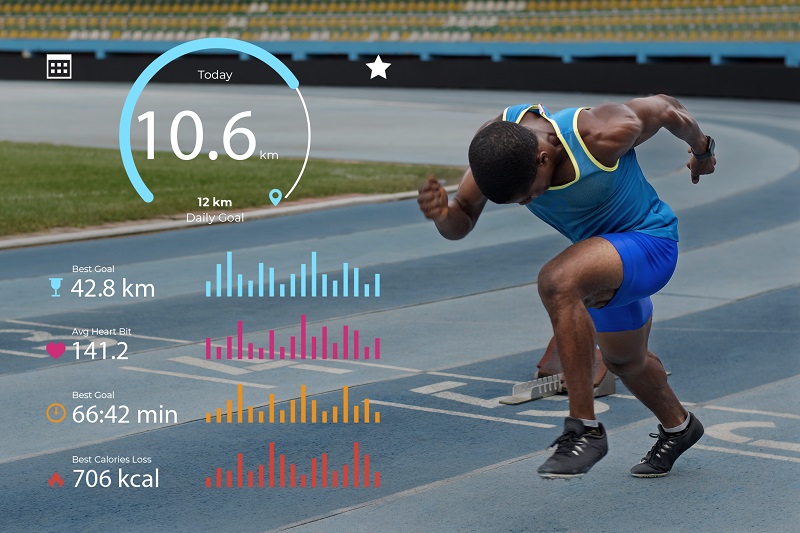
Sports analytics is significantly impacting sports by reducing injuries by up to 30% through data-driven programs. Athletes are able to achieve peak performance levels, and leagues like the NBA utilize tools such as SportVU to monitor real-time player data.
MLB teams have observed a 10% increase in win rates, while talent scouting success rates have seen a 20% improvement. The use of analytics plays a crucial role in enhancing player performance, refining strategy, and influencing game outcomes to gain a competitive edge in sports.
Impact on Player Performance
Data-driven programs in sports have shown significant benefits, with reductions in injuries by up to 30% and improved athlete performance. Player tracking systems like SportVU in the NBA provide real-time data on player movements, allowing teams to adjust strategies based on performance metrics.
In baseball, data analytics have led to a 10% increase in win rates for MLB teams. Arsenal FC's use of wearable technology illustrates a proactive approach to injury prevention through analytics data. Predictive analytics in talent scouting have also improved success rates by 20% in identifying top prospects.
The integration of analytics in the sports industry is reshaping player performance by offering valuable insights that were previously inaccessible. This trend is influencing how athletes train, compete, and excel in their respective sports.
Enhanced Strategy Development
Analytics in sports has had a significant impact on the development of strategic approaches within teams. By utilizing analytics technologies, teams can improve strategy development through a data-driven approach.
For example, analyzing player movements helps identify tactical opportunities and areas for improvement in game strategies. Additionally, integrating player monitoring systems aids in performance evaluation, leading to more informed decision-making.
The use of data-driven programs has also been instrumental in injury prevention and ensuring player safety, which ultimately contributes to overall team success. The observed 10% increase in win rates for MLB teams and the 5% higher win rate for NBA teams highlight the effectiveness of analytics in shaping strategic decisions and optimizing team performance.
Influence on Game Outcomes
Utilizing advanced data analytics techniques in sports has led to notable improvements in game outcomes, demonstrating the tangible impact of strategic data-driven approaches on team performance. By leveraging data analytics, sports teams have seen a significant boost in their win rates. MLB teams experienced a 10% increase, while NBA teams achieved a 5% higher win rate compared to those not utilizing analytics.
Player movements are closely monitored through data analytics, enabling teams like the Golden State Warriors to make informed tactical adjustments for improved performance on the court. These data-driven strategies not only provide teams with a competitive advantage but also contribute to reducing injuries by up to 30%.
This highlights the profound influence of analytics on player performance and overall game results.
Role in Injury Prevention
By utilizing data-driven programs, sports teams can effectively lower injury rates and improve player performance through targeted prevention strategies. Sports analytics, including real-time data analytics and advanced analytics, play a crucial role in injury prevention initiatives.
Wearable technology, like the one adopted by Arsenal FC, enables teams to track player performance and identify potential injury risks. These tools offer valuable insights that aid in optimizing player health and safety.
Through the analysis of data on player movements and performance, teams can proactively address injury risks and ensure the well-being of athletes. Ultimately, the integration of data-driven programs in injury prevention not only reduces players' time off the field due to injuries but also maximizes their potential during play.
Advancements in Player Training
Athletes utilize wearable technology to monitor and optimize their training routines, leveraging data-driven insights to improve performance and prevent injuries. Coaches analyze training data to create personalized plans based on individual workload and recovery needs, enhancing performance and reducing injury risks. Data analytics help identify performance patterns, leading to more efficient training sessions.
Integrating training data with performance analytics offers a comprehensive approach to maximizing player potential. Embracing advancements in player training is crucial for athletes seeking to excel in sports while staying in peak physical condition and minimizing injury risks.
Fan Engagement Strategies
To enhance fan engagement in sports, a strategic approach is necessary, incorporating personalized experiences, real-time data feeds, and a mix of expertise, culture, and historical context with analytics. Research indicates that personalized fan experiences can increase engagement by up to 30%, with leagues such as the NFL utilizing data analytics to customize content for fans. Analytics take a huge role in the sports betting sector. There are paid tipsters competitions, which rely heavily on sports data analysis.
Real-time data feeds are particularly important in sports betting platforms, where analytics play a key role in expanding markets to encompass sports like golf, tennis, and pickleball. Additionally, integrating expertise, culture, and history with analytics is essential for boosting fan engagement.
Evolution of Recruitment Processes
The integration of data-driven recruitment processes in sports has significantly impacted how teams identify and recruit talent. By incorporating data analytics in player evaluation, teams can identify undervalued players and gain a competitive edge in the recruitment process.
Through the use of advanced metrics, teams can make more informed decisions when selecting players, leading to more successful recruitment strategies and effective team building. This shift towards an analytics-driven approach in recruitment has enhanced how teams assess player value, resulting in improved performance and success.
The evolution of recruitment processes through data-driven methods has transformed the landscape of sports management, highlighting the importance of analytics in shaping the future of team dynamics and player acquisitions.
Conclusion
As analytics continue to revolutionize the world of sports, the impacts are undeniable. From enhancing player performance and strategy development to influencing game outcomes and injury prevention, the data-driven insights are reshaping the way teams operate.
Advancements in player training, fan engagement strategies, and recruitment processes are all benefiting from the power of analytics.
The future of sports is being shaped by these analytical tools, leading to a more competitive, efficient, and engaging landscape for all involved.






